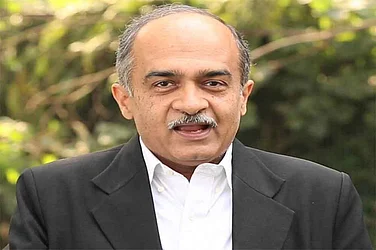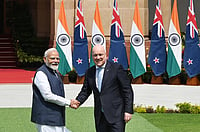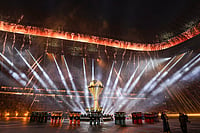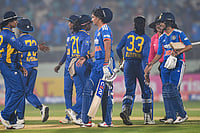The Pragyan rover of the Chandrayaan-3 mission clicked the first image of the Vikram lander on the lunar surface on Wednesday, a week after the successful soft landing.
Indian Space Research Organisation called it the 'image of the mission' as they shared the image on X. ISRO also mentioned that the navigation camera onboard the Pragyan rover has clicked this photo of the lander.
Captioning the photo wittily, ISRO wrote "Smile, please" and continued to elaborate it, said, "Pragyan rover clicked the image of Vikram lander this morning".
NavCams for the Chandrayaan-3 mission have been developed by the Laboratory for Electro-Optics Systems (LEOS), an ISRO unit.
The lander and the rover are designed to operate for one lunar daylight period (about 14 Earth days).
Earlier this week, ISRO released the first observations from the ChaSTE payload onboard Vikram. ChaSTE (Chandra's Surface Thermophysical Experiment) measures the temperature profile of the lunar topsoil around the pole, to understand the thermal behaviour of the Moon's surface.
It has a temperature probe equipped with a controlled penetration mechanism capable of reaching a depth of 10 cm beneath the surface. The probe is fitted with 10 individual temperature sensors.
ISRO came out with a graph illustrating the temperature variations of the lunar surface/near-surface at various depths, as recorded during the probe's penetration. This is the first such profile of the lunar south pole. Detailed observations are underway, the space agency said.
ISRO has said two of the three Chandrayaan-3 mission objectives -- demonstration of a safe and soft landing on the lunar surface, and demonstration of rover movement on the moon -- have been achieved, while the third -- in-situ scientific experiments -- are underway.


























